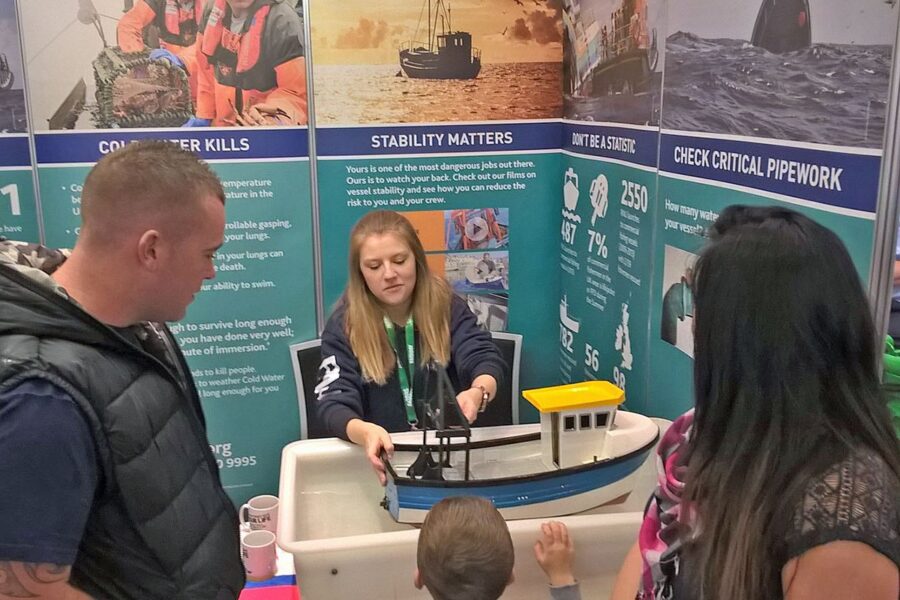John Periam gets advice from RNLI fishing safety manager Frankie Horne on the issues that can threaten vessel stability and the safety of those onboard…
RNLI analysis of commercial fishing fatalities between 2007 and 2018 shows that a high number occurred due to the loss of vessel stability.
There are many reasons why a vessel can capsize, but they fall into a small number of categories:
- Vessel modification
- Free surface effect
- Overloading
- Hauling from height
- Watertight integrity.
Vessel modification
Modifying a vessel from one type of fishing to another is not unusual in the under-15m fleet. This can mean having to add more equipment to a vessel, or even moving things around to suit the working area. If the deck area is tight, skippers tend to look at space above head height. Any weight moved or added high up has a great effect on the vessel’s stability, and must be checked.
If any modification is taking place, you must inform the MCA and take advice before you start.
Free surface effect
This is something that is controllable simply by making sure that water, the catch and other objects cannot move around the vessel uncontrolled. Things to look out for include blocked scuppers leading to water retention on the deck, undetected rising water in bilges, the catch moving around either in the fishroom or on the deck, and fishing gear or ropes not stowed correctly.
Overloading
Overloading a vessel is easy to do, especially if there is no calculation on the vessel to guide the skipper. “Most skippers I have spoken to have admitted that they have at times pushed the limit – myself included,” said Frankie Horne.
Skippers tend to have a good feel for what their vessel can safely hold, but they also know they have taken it to the maximum, and therefore could be at risk. It only takes a blocked freeing port or a burst pipe or a leaking hatch cover to change the whole situation. Make sure all freeing ports are clear, scuppers are well maintained, and bilge alarms are in working order.
Hauling from height
“This can change a normal task from safe to unsafe in seconds,” said Frankie. Most fishermen have been in this situation, when hauling a weight in the net that needs to be freed, or there are fouled pots that need to be untangled, or mobile/static gear is fast to the seabed.
When hauling any heavy object, make sure that all watertight hatches are closed, and that weight is kept as low and controlled as possible when lifting. Beware the sudden shifting of suspended weights.
Watertight integrity
Most vessels going to sea operate with hatches closed. This is not possible with fishing vessels. In some cases, hatches are open all day for operational reasons.
However, watertight hatches are vital to a vessel’s capability to recover from a large angle of heel. If water can get inside the vessel, it will affect the vessel’s ability to right itself. Make sure that when you are in transit, or when you are hauling weight, such as being fast to the seabed, your hatches are closed and sealed.
Fishing vessels operate in a different way to other seagoing vessels – but with regard to vessel stability, they are the same. Skippers must be aware of their vessel’s capabilities and operate within them. “Having been a lifeboat coxswain for over 20 years, I have seen incidents where we have towed vessels in – or have been to an incident where one has been lost – due to issues referred to in this article. It is always important to double-check these key factors.”
Fishermen need to get the most out the vessel they have, and that can sometimes involve modifications to improve its performance or capabilities – but if you are looking to change your vessel in any way, you must seek advice from the MCA in the UK or the MSO in Ireland before you start work.
Take a look at the RNLI’s videos on vessel stability here.
This story was taken from the latest issue of Fishing News. For more up-to-date and in-depth reports on the UK and Irish commercial fishing sector, subscribe to Fishing News here or buy the latest single issue for just £3.30 here.








